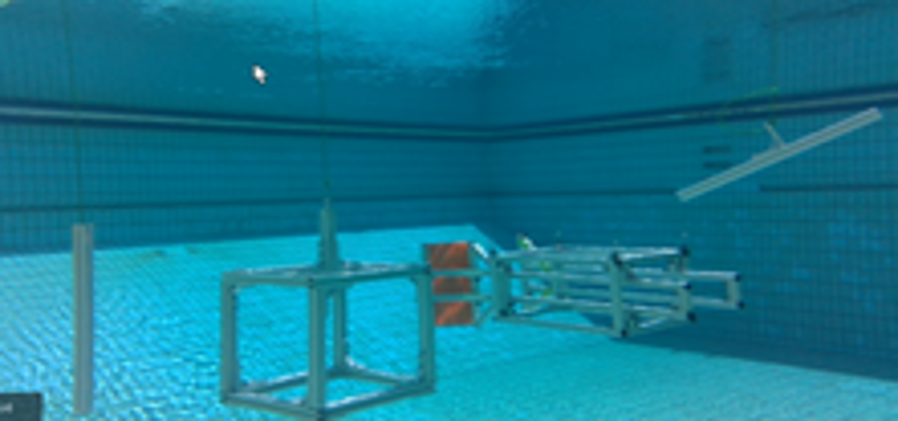Underwater Robotics Project
Seeking Break-through in Tracking Object in Turbid Underwater Environment

"Our project aims to enable underwater autonomous vehicles to navigate safely among surrounding objects in turbid environments. The capabilities could be used in underwater rescue missions and many other underwater applications."
Assoc Prof. Cai Yiyu, Principal Investigator
5 Work Packages

CAE model of the Target, UUV, sensor and turbid environment will be developed to test the concepts on a graphic workstation with kinematic and kinetic effects. Data communication protocols will be elaborated in this work package.
- Simulator
- Object models to complicate the environment for pose estimation capabilities
- Different environments can be simulated based on the turbidity of water
- Using the simulator as a platform to evaluate the novelties/ concepts of work
- Multi-Mode Control: Incorporating the Physical ROV modules into the multimode system
- Low-level controls, PID controls
- Sensor modules: RealSense optical camera, Blueprint M750d sonar, Advance Navigation INS
- Physical mini-ROV
- Graphical User Interface
- “dashboard” and “config” UI system
- include a record feature for a pilot to record the data

The improvement of Close-range Pose-Estimation via Illumination of Objects' Salient Features:
- At close-ranges, optical modalities for UW 3D Perception (adequate visibility + higher resolution)
- Turbid waters cause significant noise with objects' spatial details obscured even after noise removal.
- Objects using a powerful illumination source to highlight these features, for easier shape detection & formation by Computer Vision processes.
- we thus propose the usage of a laser-illuminator component to enhance close-range 2D and 3D Perception of AUVs:
- Illuminator would project a powerful laser light in a scanning motion onto objects on a perpendicular plane for multiple frames;
- Merging images obtained per scan to approximate the shape of the object;
- Triangulation principles to construct the ‘Z’ height of an object and 3D position of points;
- Expected better result for 3D approximation of object's shape via Triangulation principle from multiple Optical RGB frames of RGB camera.

Robust multi-target tracking would be required. The study on the perception and tracking uses the down-selected sensors from work package 2 to carry out on the developed laboratory-scale water tank. The perception task will be conducted in two different contexts:
- Close-range object detection and tracking (<10 m)
- Long-range object detection and tracking (>10 m)

To define and develop the tracking module and integrate it into the existing control & communication framework of Saab UUV. The system is programmed in the Robotic Operating System (ROS).

A proof-of-concept needs to evolve to a fully functional prototype before a product is ready for market. Tests are required to fine-tune system specifications and recognize realistic requirements under natural water resources (e.g., coastal waters) using our robotic platform. Experiments will be carried out in two different water conditions: swimming pool (clear water) and Nanyang Lake (turbid water). Data will be collected and analyzed to test the effectiveness of our detection and tracking algorithms.
 |  |
Swimming Pool Nanyang Lake

